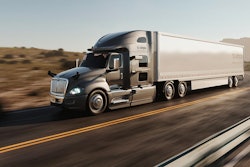The Electro-Motive Division of General Motors introduced a diesel-electric train at the 1939 World’s Fair. Diesel engines of all sizes were displayed and promoted as the power system of the future. It took roughly 25 years for the diesel-electric train to replace the majority of steam trains in the United States.
The 1939 World’s Fair also displayed the highways of the future — multi-lane divided highways with overpasses and sweeping ramps that allowed exiting vehicles to change roads at speeds of 50 mph or more. It took roughly 30 years for that vision to become the National Highway System.
Sometimes the visionaries are right.
There were a fair share of visions that came to being from that 1939 event. Some of those visions have yet to become reality. One thought was that we would all have personal flying cars and our driveways would become runways. The Harrier jump-jet and the new F-35 might qualify if you happen to be a military pilot, but the rest of us are probably going to have to wait for that vision to become a reality.
Automation always has intrigued engineers and visionaries. Something deep in the soul of anyone in industry is the desire to look at repetitive tasks and wonder “Could I make a machine to do that?” Freeing up people to “do other things” is a recurring force in invention. The business minded people have the same genetic need to make things cost less. The concept of efficiency means doing more, better, and with less.
The challenge in all this is that many times, as Jeff Goldblum playing Dr. Ian Malcom so aptly states in the movie Jurassic Park, “…your scientists were so preoccupied with whether or not they could that they didn’t stop to think if they should.” Simply put, nothing happens in a vacuum. The concept of unintended consequences is a reality with all innovation.
The cottage industries that pre-dated the industrial revolution built skilled labor, craftspeople and tradespeople. The industrial revolution largely put these skilled seamstresses, blacksmiths, furniture makers and others on the back burner of career paths. Skilled labor became less skilled labor feeding the machines. The “do other things” goal of the visionaries is not always a good thing. Endless science fiction novels and movies have been produced over the last century on the potential downside of innovation.










